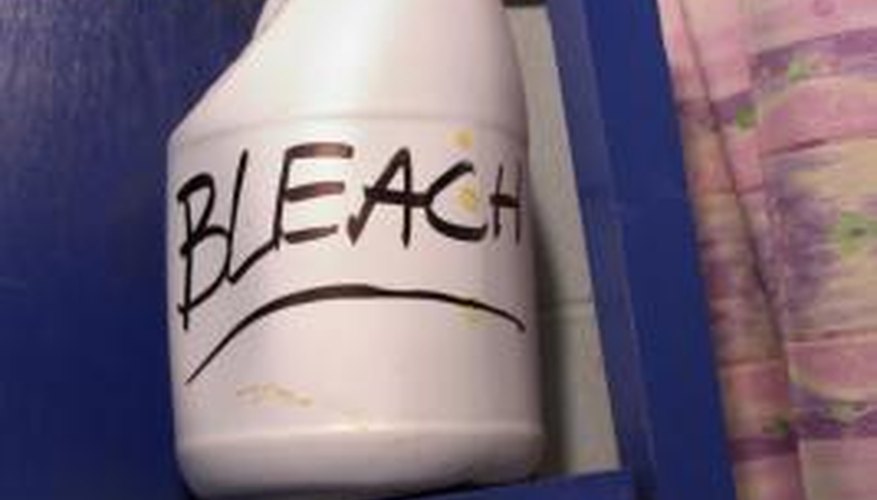Bleach is an alkaline solution of a chemical called sodium hypochlorite, which acts as a base. It can also act as an oxidising agent, and when it comes in contact with hydrochloric acid, it oxidises the hydrochloric acid to form chlorine gas. Clearly, this isn't the kind of reaction you want in your bathtub, so avoid bringing these two chemicals together.
Chemistry
The chemical equation for bleach and hydrochloric acid is as follows: NaClO + 2 HCl ----> Cl2 + H2O + NaCl. In other words, sodium hypochlorite and hydrochloric acid make saltwater and chlorine gas. The saltwater clearly isn't harmful, but the chlorine gas rapidly escapes from the solution and into the surrounding air, where you and anyone nearby can inhale it. Chlorine gas is highly reactive because the bond between the two chlorine atoms is weak.
Concentration
Your sense of scent can detect chlorine gas in air at concentrations as low as 0.08 parts per million. At that level, it is basically an irritant. Under Occupational Health and Safety Administration guidelines, exposure levels for workers may at no time exceed 1 part per million. Levels of chlorine as low as 15 parts per million can cause severe throat irritation. Levels of 50 parts per million or above are very dangerous. According to the OSHA, the lowest reported lethal concentration is 430 parts per million for 30 minutes.
- Your sense of scent can detect chlorine gas in air at concentrations as low as 0.08 parts per million.
- Levels of chlorine as low as 15 parts per million can cause severe throat irritation.
Health
Initial symptoms of exposure to chlorine gas include eye, nose and throat irritation, sneezing and restlessness. At higher levels, you may find it difficult to breathe, cough violently, choke and become dizzy and nauseous. Chronic repeated exposure to low levels can cause dermatitis, eroded tooth enamel and severe chest pain. Chlorine gas can definitely kill you -- that's why it was used as a chemical weapon during the First World War.
- Initial symptoms of exposure to chlorine gas include eye, nose and throat irritation, sneezing and restlessness.
- Chronic repeated exposure to low levels can cause dermatitis, eroded tooth enamel and severe chest pain.
Precautions
The amount of chlorine gas released when you mix bleach and hydrochloric acid will depend on the amount of each and their concentrations. However, take no chances -- why expose yourself to a chemical warfare agent? If you have household chemicals that contain hydrochloric acid (for example, tile or toilet bowl cleaner), don't mix them with bleach. The same holds true for chemicals that contain ammonia. Check the ingredient list on a chemical before mixing it with bleach to make sure it doesn't contain anything incompatible.
- The amount of chlorine gas released when you mix bleach and hydrochloric acid will depend on the amount of each and their concentrations.
- If you have household chemicals that contain hydrochloric acid (for example, tile or toilet bowl cleaner), don't mix them with bleach.
